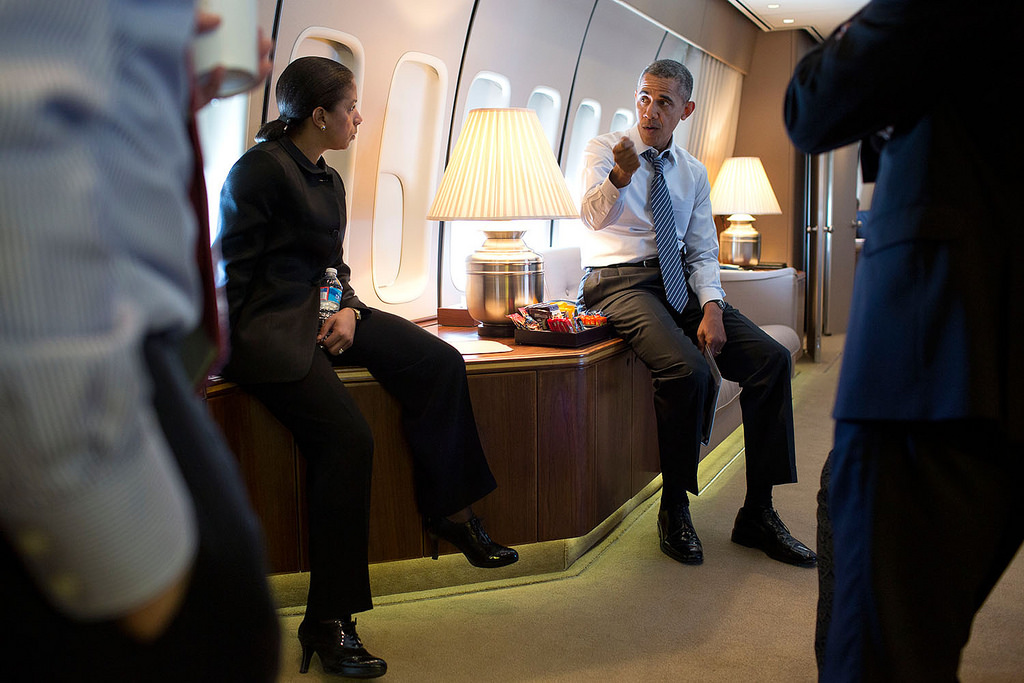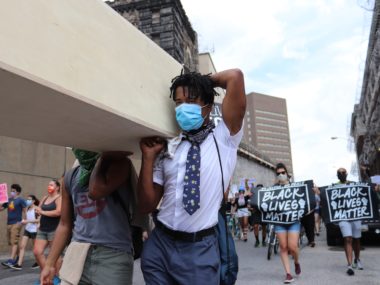By Cullen Hendrix for Denver Dialogues

After two decades of slow but consistent progress toward more democratic governance, Africa is in the midst of an authoritarian retrenchment, with democratic backsliding in some of its most stable democracies (South Africa) and more repressive regimes (Eritrea, the Gambia, the Democratic Republic of Congo). President Obama’s planned visit to Ethiopia—home to one of the region’s most repressive regimes—will push the relationship between democracy and human rights in Africa further into the spotlight.
The trend is worrisome for many reasons, not the least of which is the expectation that as civil liberties and democratic institutions erode, the human rights situation will erode along with it. The conventional wisdom is democracies perform better in respecting the human rights—particularly the rights of free association and freedom from abuse, torture, and extra-judicial killing—than non-democracies. However, research by Christian Davenport and David Armstrong, and Bruce Bueno de Mesquita, George Downs, Alastair Smith and Feyral Cherif, suggests that democracy does tame state coercive behavior, but only at a relatively high threshold. A lot of “democraticness”, to use Davenport’s term, is needed. Comparatively small democratic openings in otherwise authoritarian states, such as the 2011 constitutional referendum and subsequent parliamentary elections in Morocco, do not lessen repression. Indeed, such partial liberalizations may result in more contentious politics and greater use of force by the government.
But does democracy truly pacify, and if so, how? The association between democracy and less repression might be due to three different mechanisms:
- Increasing the political costs of using force. If repressive actions are deemed inappropriate, leaders can be removed from office via the ballot box. Of course, systematic human rights violations have been central to the electoral platforms of many elected leaders: Álvaro Uribe, the former president of Colombia, was elected (and re-elected) largely on the strength of a hardline, anti-guerrilla platform that resulted in some of the worst human rights abuses in Latin America in the past two decades.
- Norms of acceptable behavior. In democracies, society generally accepts the values of docility, tolerance of others, open discussion and peaceful assembly. The acceptance of these norms means elected leaders in these societies are likely to share them as well. Some, like Italian political theorist Giovanni Sartori, believe these norms must predate, rather than follow from, democracy.[1]
- Pacification of the opposition. Seeing more avenues for nonviolent contestation, including participating in elections and supporting political parties, dissidents may be less likely to express their grievances using the types of tactics—such as insurgency, terrorism, and other means of violent contestation—that are typically met with force. That is, democracies are less repressive because they face less violent, threatening challenges to their authority.
Because most of what we know about the link between repression and democracy is based on annual, “big-picture data” on human rights conditions, such as the Cingranelli and Richards Human Rights Data or the Political Terror Scale, we don’t know which, if any, of these causal mechanisms are operative. The domestic democratic peace may simply be due to changes in the nature of dissident demands and tactics, rather than any constraints on government behavior, for instance.
In a recent working paper, Idean Salehyan and I get some leverage on these causal mechanisms by measuring both repression and opposition tactics at the event level, i.e., the level of a particular protest, strike, or anti-government attack. We base our analysis on the Social Conflict Analysis Database, which catalogues over 12,000 protests, strikes, riots, anti-government attacks, communal conflicts, and intra-government violence across Africa, 1990-2013. These data allow us to account for both dissident demands—do they seek political reform or economic benefits, and do they petition the state or private firms—and tactics. In particular we note whether the event was violent or not. Nonviolent events include peaceful demonstrations, whether organized or unorganized, as well as strikes, both limited to a particular sector and general workplace stoppages. Violent events included riots, pro-government violence and anti-, extra- and intra-government violence. Additionally, we catalogued whether the event was repressed with lethal force, resulting in the deaths of protesters or dissidents. Lethal force represents an interesting test of the domestic democratic peace because killing represents the most irrevocable, ultimate form of state repression.
What we found was interesting. Just looking at the raw data, democracies appear less prone to use lethal force, implementing it roughly 24% less frequently.[2] Once we accounted for the effects of tactics, demands, and other regime characteristics, however, democracies—even according to the high threshold identified by Davenport and Armstrong and Bueno de Mesquita et al[3]—were no less likely to use lethal force against dissidents. That is, faced with the same type of challenge—a violent riot targeting the government or a strike against a privately owned mine—democratic governments were not less likely to kill dissidents than non-democratic governments. Thus, if cross-national, annual human rights data reveals a correlation between democracy and improved human rights, this can be taken as evidence for the third mechanism: democracy reduces state repression by pacifying the opposition, rather than constraining the government.
This preliminary finding comes with a few caveats. For one, it may be the case that Africa is unique in this respect. The international democratic peace—the finding that democracies do not war with other democracies—appears to be inverted for Africa, with democracies more likely to war with one another. Perhaps democratic institutions engender different incentives for African rulers than they do in other regions. For another, it is definitely the case that democracies are less likely to use non-lethal repression—such as arrests, tear gas, water cannons and nightsticks—against dissidents when accounting for the same event-level attributes. For a third, many types of repression—such as after-the-fact arrests, stealth torture, and the like—are not addressed. Our data only allow us to assess street-level, real-time dynamics of repression and dissent.
Still, these findings provide some basis for discerning the causal pathways by which democracy lessens lethal repression by the state: by pacifying the tactics of the opposition, rather than constraining the government’s response thereto. Put differently: if democracies are less lethally repressive in Africa, it’s because they face fewer armed mobs than their authoritarian counterparts, not because they use less repression against those armed mobs that arise.
[1] Writing in the Journal of Democracy in 1995, Sartori says, “The notion of preconditions of democracy generally refers to economic preconditions. I will come to these shortly, but here I mean historical antecedents. There are two: one is secularization, and the other is what I call the “taming” of politics. Secularization occurs when the realm of God and the realm of Caesar—the sphere of religion and the sphere of politics—are separated. As a result, politics is no longer reinforced by religion: it loses both its religion-derived rigidity (dogmatism) and its religious-like intensity. Out of this situation arise the conditions for the taming of politics. By this I mean that politics no longer kills, is no longer a warlike affair, and that peacelike politics affirms itself as the standard modus operandi of a polity.”
[2] Welch’s t-test of a significant difference between lethal repression in non-democracies (M = 0.085, SD = 0.004) and democracies (M = 0.065, SD = 0.005); t(4,467) = 3.16, p = 0.002.
[3] Revised combined Polity score ≥ 6.







2 comments
Just sharing an honest opinion, but seems like an unnecessary surplus of words to state the obvious.
good read